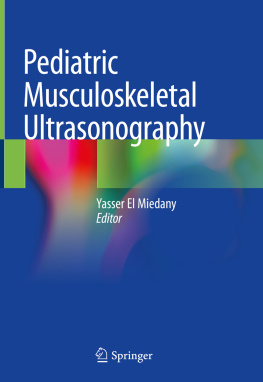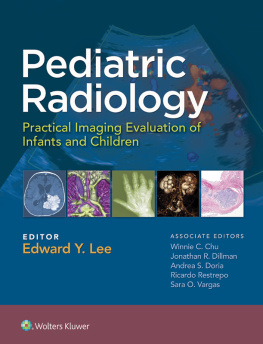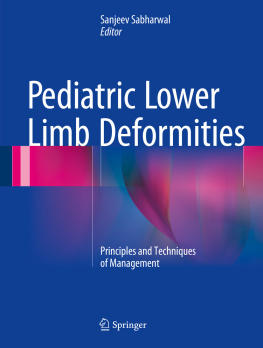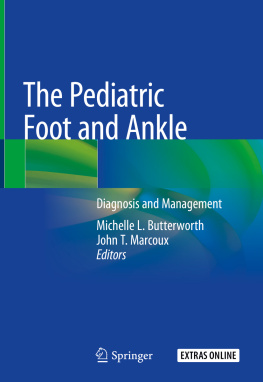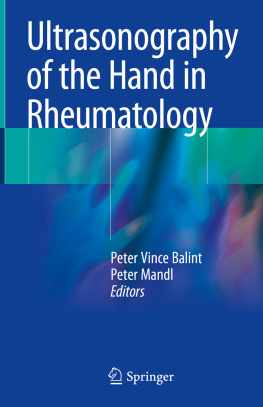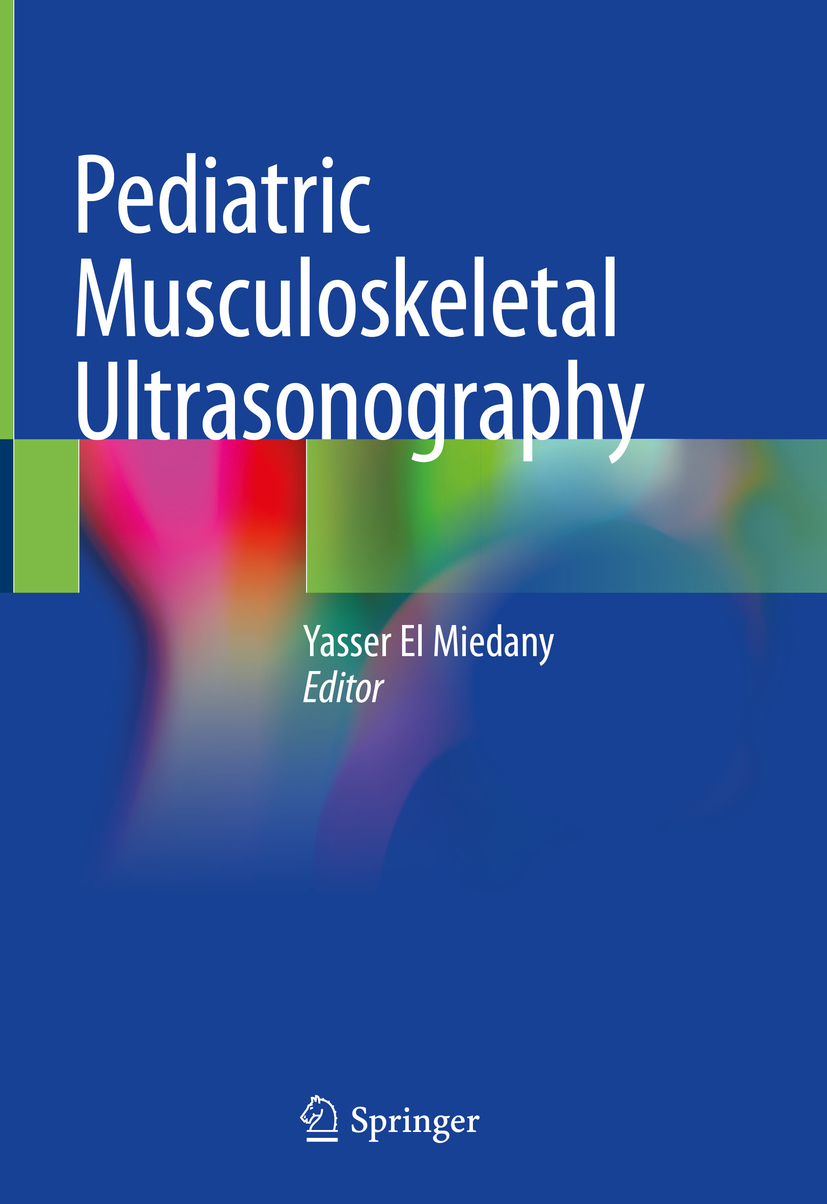Editor
Yasser El Miedany
Medway Foundation Trust, Kings College London, London, UK
ISBN 978-3-030-17823-9 e-ISBN 978-3-030-17824-6
https://doi.org/10.1007/978-3-030-17824-6
Springer Nature Switzerland AG 2020
This work is subject to copyright. All rights are reserved by the Publisher, whether the whole or part of the material is concerned, specifically the rights of translation, reprinting, reuse of illustrations, recitation, broadcasting, reproduction on microfilms or in any other physical way, and transmission or information storage and retrieval, electronic adaptation, computer software, or by similar or dissimilar methodology now known or hereafter developed.
The use of general descriptive names, registered names, trademarks, service marks, etc. in this publication does not imply, even in the absence of a specific statement, that such names are exempt from the relevant protective laws and regulations and therefore free for general use.
The publisher, the authors, and the editors are safe to assume that the advice and information in this book are believed to be true and accurate at the date of publication. Neither the publisher nor the authors or the editors give a warranty, expressed or implied, with respect to the material contained herein or for any errors or omissions that may have been made. The publisher remains neutral with regard to jurisdictional claims in published maps and institutional affiliations.
This Springer imprint is published by the registered company Springer Nature Switzerland AG
The registered company address is: Gewerbestrasse 11, 6330 Cham, Switzerland
Preface
The use of musculoskeletal ultrasonography in rheumatology clinical practice has expanded swiftly over the past decade as an outcome of the technological developments and implementation of the window of opportunity concept in most of the inflammatory musculoskeletal conditions. Ultrasound booked its place as the rheumatologists stethoscope as it enabled the treating health-care professional to diagnose, prognosticate, and monitor disease activity as well as response to management. In contrast to other imaging modalities such as X-ray and magnetic resonance, ultrasound has clear advantages, namely, good tolerability, no radioactivity, ability to scan both joints and soft tissue at one sitting, and its dynamic facility, which enables direct correlation between clinical and imaging outcomes. In spite of some concerns regarding standardization, the use of ultrasound in rheumatology is expected to grow further as prices of the machine fall and the opportunity to practice improves.
In contrast with musculoskeletal ultrasonography in adults which has been thoroughly studied and become a well-established tool for patients assessment both in research and clinical practice, musculoskeletal ultrasonography use in pediatrics is still limited. This is surprising, given the great potential and advantages of this technology for the assessment of the musculoskeletal system in children. Ultrasound is well-tolerated by children; therefore, it can be considered a typical first-line modality for a wide array of pediatric musculoskeletal imaging indications. Being readily accessible in both emergency and outpatient settings, ultrasound allows the health-care physician/sonographer to perform a dynamic assessment of the musculoskeletal system without using ionizing radiation or sedation. Unlike MRI, which requires the clinician to select a focal area of concern, ultrasound enables the evaluation of multiple joints or lesions in a single session and permits the operating person to rapidly compare abnormal structures to the contralateral side. Panoramic images also allow an expanded view and can be useful when assessing larger lesions. In addition, musculoskeletal ultrasonography started to book its place in patients monitoring as it facilitates the ability to detect subclinical synovitis in children with JIA.
There are significant differences between joints of adults and children due to the age-related peculiarities of bone and joints in the immature skeleton, such as the presence of non-ossified cartilage and of a physiologically enhanced Doppler flow attributed to nutrient vessels. Therefore, this book was formatted to cover a whole range of musculoskeletal ultrasonography in pediatrics. In the first section, the fundamentals of pediatric musculoskeletal ultrasonography are discussed. Two chapters have been dedicated to sonoanatomy and differences between adults and children. Each approach to the relevant pediatric sonoanatomy is accompanied by clinical pearls to aid readers acquire as well as interpret ultrasound images of the area of interest with ease, provide guidance for successful intervention, and avoid pitfalls. This is followed by the second section which covers a whole range of anatomical sites, shoulder and arm, elbow and forearm, wrists and hands, hip and thigh, knee and leg, as well as ankle and feet. Scans for normal sonoanatomy as well as possible pathology are included. The third section discusses the use of ultrasonography in juvenile inflammatory arthritic conditions such as inflammatory arthritis and spondyloarthritis. In response to several of our colleagues requests, we dedicated a specific section for musculoskeletal ultrasonography in standard practice, reporting US scans and US-guided interventional procedures in pediatrics. Section 5 discusses the use of US in children with sports injuries, whereas the last section summarizes advances in pediatric musculoskeletal ultrasonography.
The main theme of this book was to deliver a very practical and reader-friendly guide. On one hand, it describes a how-to-do-it approach, while, in the meantime, it delivers the evidence and advanced knowledge base of the relevant pathological sonographic appearances of the various musculoskeletal tissues. The illustrations and figures were meticulously selected to give the reader a clear guide toward implementation in real-life practice. Focusing on the major values of ultrasound in pediatric musculoskeletal conditions, this book with its 20 chapters is expected to fill an important void in the current literature. It represents what can be considered to be the best current thinking on the role of ultrasonography in the assessment of pathology, diagnosis, and treatment of different musculoskeletal pediatric diseases. Therefore, this work can serve as both excellent introductory and a very good reference resource for future reading.
This book has been the outcome of cooperative effort of a large international group of leaders in musculoskeletal ultrasonography. They have done a superb job in producing authoritative chapters including vast amounts of scientific and clinical data to create state-of-the-art descriptions of sonographic changes encompassed by different rheumatic diseases. Special thanks to Professor Angelo Ravelli who wrote the books foreword and to everyone who helped me bring this book to light.
Personally, I feel privileged to have compiled this work and am enthusiastic about all that it offers to our readers. I hope you too will find this edition a uniquely valuable educational resource.

